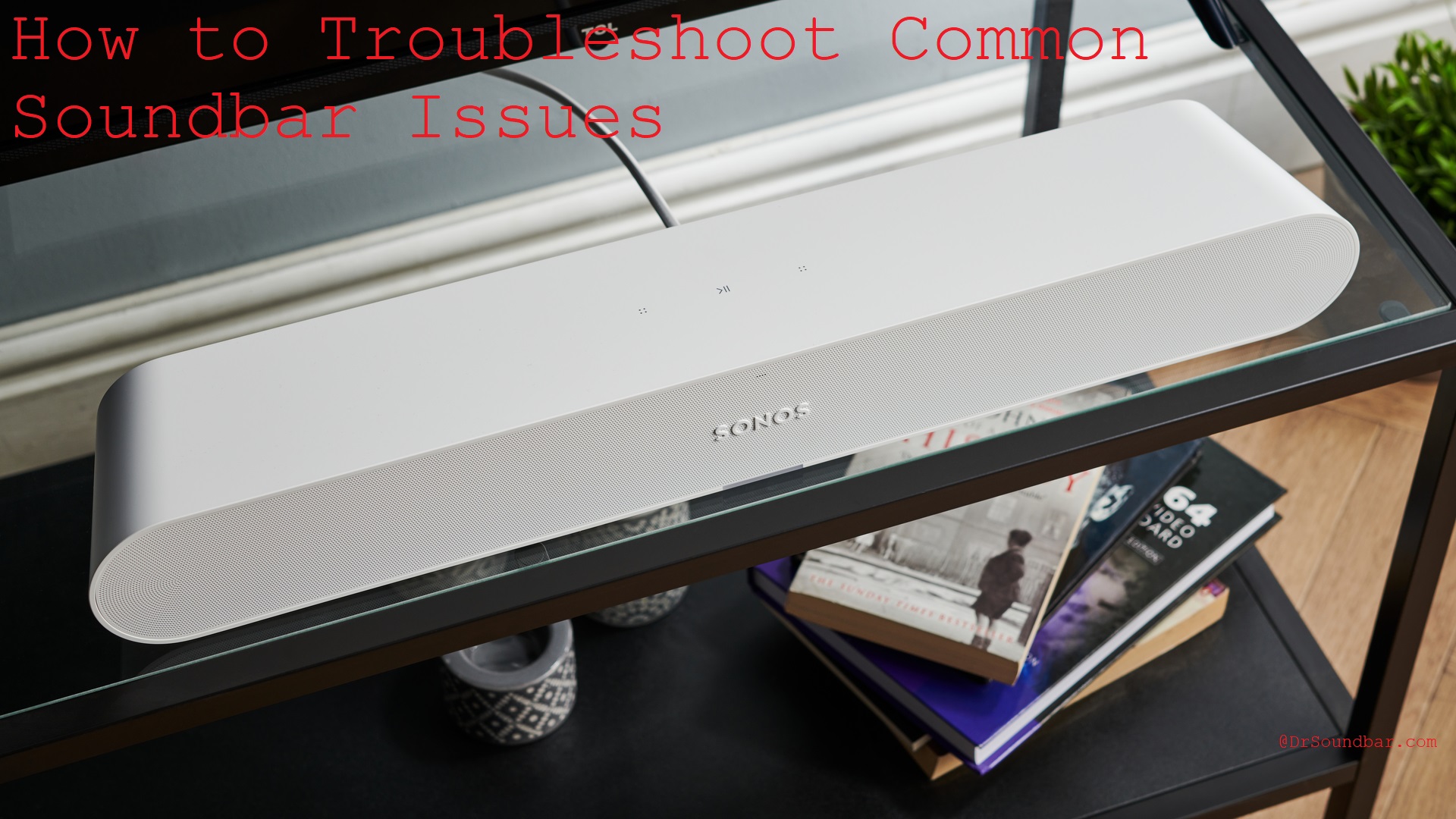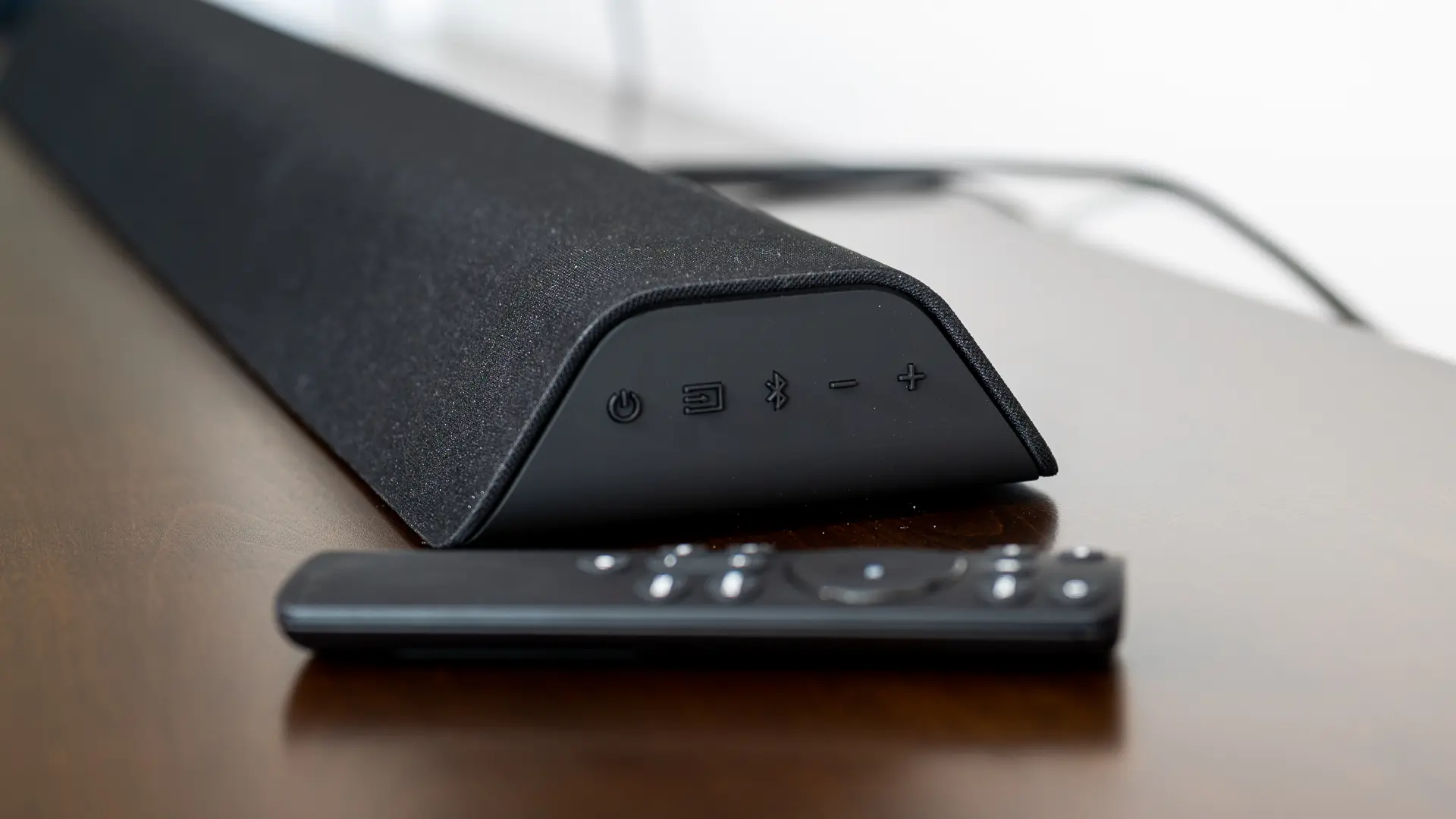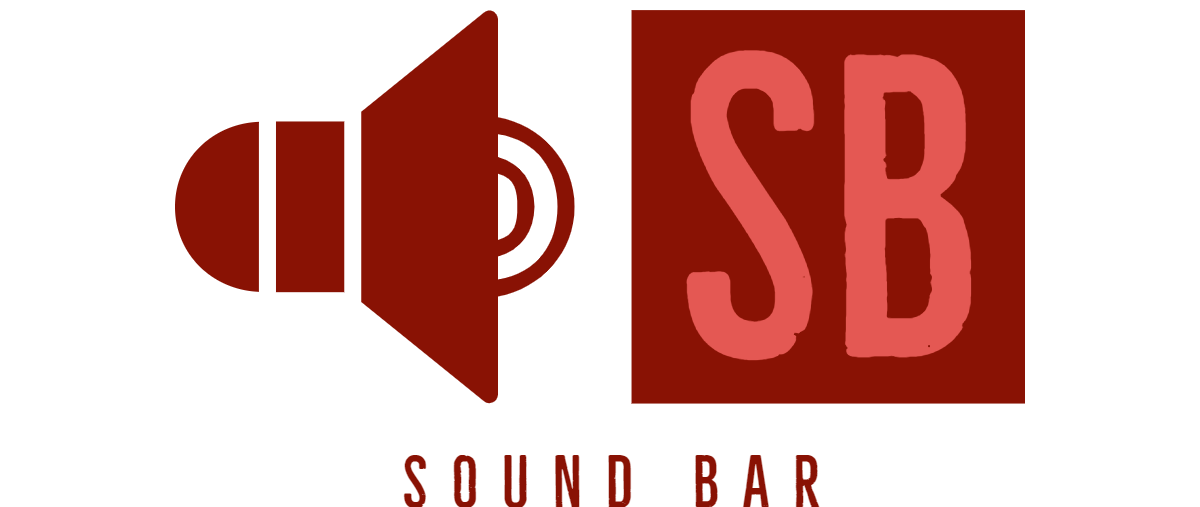Are you struggling with soundbar issues? Do you need help troubleshooting common soundbar problems? You’re in the right spot!
This comprehensive guide will walk you through each step to help resolve any issues you may be having. Whether it is the HDMI connecting or power resetting, this article will equip you with the knowledge and confidence to get your soundbar set up and running again.
Soundbars provide a simple and convenient way to upgrade the sound quality of your home entertainment system. They are lengthy thin sound systems that are designed for easy installation and tend to cost less than traditional audio setups. But like any electronic device, sometimes they can have issues that need troubleshooting. In this guide, we will walk you through some common issues and steps you can take to address them.
We will cover topics such as:
- Identifying the source of particular issues with your soundbar
- Issues related to poor or no audio
- Issues related to connection problems
- Issues related to wireless connections
- How to reset your soundbar
- Tips for setting up a new soundbar

Explanation of what a soundbar is
A soundbar is an all-in-one audio system designed to provide an immersive, movie-theater like experience in your home. A soundbar offers powerful performance with convenient placement options, making it a great addition to any audio setup. Soundbars use multiple speakers and components to deliver high-quality sound and features such as built-in Wi-Fi connectivity, 3D immersive audio processing, Bluetooth streaming, and DTS:X decoding or Dolby Atmos compatibility.
When you’re having trouble with your soundbar, here are some of the most common issues and their solutions to help you troubleshoot.
Importance of having a functional soundbar
Soundbars are an essential part of a home theater system, providing more realistic audio than a TV’s built-in speakers. However, soundbars can often be tricky to set up and maintain. When problems arise with your soundbar, it’s important to quickly identify and resolve the issue in order to enjoy crystal-clear movie and gaming audio without interruption. To help you get up and running again, it helps to understand the different components of a soundbar system and how they issue could affect the overall performance.
The typical soundbar is composed of two main elements; the bar itself — which houses multiple drivers in order to produce sound — and the subwoofer — which is designed to deliver deep bass frequencies with clarity and power. Both components are necessary for proper audio reproduction, but may sometimes give rise to technical issues that could affect their performance. Below are steps you can take as well as some common issues that users may experience when trying to troubleshoot their systems:
1) Make sure all cables are connected securely: A loose cable connection is one of the most common causes of faulty audio from any speaker device. Before any other troubleshooting steps can be taken, make sure all inputs/outputs are properly secured.
2) Check settings in external devices: Many audio problems may be related to settings in external devices such as TVs or gaming consoles connected via HDMI or optical cables may produce undesired results if not configured correctly. Check user manuals for each device connected on how make adjustments based on your preference.
3) Poor pairing between speaker elements: If you have difficulty getting both elements (soundbar + subwoofer) communicating properly, try re-pairing them following setup instructions found in user manuals or online resources provided by respective manufacturers.
4) Update firmware: Improperly updated firmware can lead to playback issues with newer formats like object-based surround sound formats such as Dolby Atmos or DTS X . Check manufacturer page for updates that could provide stability enhancement for certain functions on your speaker system.
Overview of common soundbar issues
When it comes to enjoying a home theater experience, soundbars can make all the difference — sending audio from multiple devices to your surround sound system. However, like all electronics, soundbars can sometimes experience technical difficulties. Here’s an overview of common soundbar issues and tips on how you can troubleshoot and fix them quickly.
- Poor Sound Quality – The most common issue with soundbars is poor quality sound. This could be due to the environment in which the soundbar is set up, or it could also be due to an audio source not configured correctly, or audio cables not connected properly. It’s important to identify if the problem lies within the configuration settings or within the physical setup of your system to determine what needs to be adjusted or replaced in order to get ideal performance out of your system.
- Lack Of Bass – If you’re lacking bass when playing audio through your soundbar then it’s likely because your sources aren’t setup properly. Try adjusting EQ settings on your device as this may help improve bass performance as well as adjusting speaker placement in relation to each other and other obstacles that may dampen bass frequencies such as furniture and flooring material issues etc.
- Power Issues – Power related issues are likely related either invalid power supply such as incorrect voltage, incorrect amperage rating or power supply cord length being too long for indoor usage; these are easy fixes that should help resolve any unexpected shutdowns or random unresponsiveness during use related power issues caused by these factors easily rectified with proper power source/cords & lengths used for best operation/performance results
4 .Connection Issues – Connection related issues are often an indication of either incorrect connection port types & configurations leading back from audio source device used for playback purposes; commonly found in HDMI connections being wired incorrectly (directional) from source device itself (laptop/computer etc) back into our display receiver/sound-bar device connections mismatched (types used). Often troubleshooting these type of connection complications require tedious fixing as most display receiver & networking devices have separate configurations settings requiring attention before playback connectivity can occur again correctly matched between both external devices meant for playback purposes; so take time understanding both devices fully & ensure proper settings saved correctly before running into unnecessary frustration trying numerous cables paired together mismatched with wrong protocols!
Il. Remote Control Issues
Remote control issues are one of the most common soundbar problems. The most likely cause of this is the batteries in your remote control, so check the battery connections inside the battery compartment and replace them if necessary. You can also try resetting your remote control by pressing and holding the power button for 10 seconds.
If you’re using universal remotes with your soundbar, make sure you have programmed it correctly for it to work seamlessly with your system.
If none of these solutions work, then you should contact your local electronics store or soundbar manufacturer to ask if they can provide a replacement remote or help with programming. You may also need to reset your soundbar, as many require a factory reset when the remote is replaced or reprogrammed.
Troubleshooting remote control problems
If you are having trouble with your soundbar remote control, there are a few steps you can take to troubleshoot the issue. To begin, check to make sure the device is properly connected and all connections are secure. If the connections seem fine, next make sure that the batteries in your remote control are working by attempting to turn it on or off using a different remote control that uses the same type of batteries as yours.
If none of these steps have solved your problem, then you may need to reset your soundbar’s system. To do this, unplug the device from power for at least 10 seconds and then reconnect it. This should reset it back to its original state and allow you to use your remote again. If this does not work, then there may be an issue with either the soundbar’s internal components or its connection to another device in your home such as a television or streaming device. In these cases it is best to consult with a professional who can help diagnose and fix more complicated problems such as these.
Replacing batteries
Replacing batteries may be necessary if your soundbar remote is no longer working properly. Check to make sure your batteries are not already corroded and replace them if they are. Use the appropriate size and type of battery, usually either AAA or AA, and never mix old and new batteries.
Once you’ve replaced the batteries, try using the remote to turn on your soundbar; if that doesn’t work, then check to determine if another issue may be causing a problem. Batteries can last for up to two years, depending on use, so keep an eye out for signs of corrosion or rusting – this could indicate that it is time for a battery replacement.
Resetting the remote control
If you are experiencing performance issues with your soundbar’s remote control, resetting it can be a good first step. To reset your remote:
- Remove the batteries from the soundbar remote.
- Press and hold any button on the remote for 15-20 seconds to clear the memory of the remote control.
- Reinsert the batteries into your soundbar’s remote and attempt to use it again.
- If this does not resolve your issue, try resetting your soundbar as well by powering off and then powering on save settings to their factory defaults, replacing any neglected software updates, and clearing connected accounts or profiles unless you have been instructed to keep them by customer support technicians.
Soundbar Power Issues
If your soundbar is not powering on or is having difficulty turning on, then this guide can help assist in troubleshooting the issue.
First of all, it’s important to check the power connection from the soundbar to make sure it is connected properly. In some cases, plugging it into a different outlet may help solve the issue. Additionally, checking for any loose or broken wires leading to your power source can also resolve certain issues with power supply.
If after these steps have been taken and there is still an issue with power, we recommend consulting your user manual for instructions specific to your model of soundbar.
Once you have gone through all these steps and nothing has solved the issue then you may need to contact a technician for further assistance.
Troubleshooting power issues
The majority of soundbars will require power to be supplied to them either through mains electricity or a battery. In some cases, there may be an issue with the power supply which can prevent the soundbar from working. There are several recourses available depending on the soundbar being used.
If the soundbar is connected to mains electricity then it is important to check that it is connected securely as well as checking all plugs and sockets for power supply. To ensure optimum performance, ensure that nothing else is plugged into the same main outlet as this could cause a dip in voltage or pose a fire hazard if the circuit becomes overloaded. If, after checking all sockets, power supply still does not reach the soundbar then it may be necessary to contact a certified electrician for further advice on how to proceed with troubleshooting power issues.
If the soundbar works off a battery, then check that it has enough charge and that cell batteries are still viable – especiall if they have been used extensively already.. It may also be necessary to check that all cables and inputs are firmly secure so there is no chance of interference with signal strength or transfer rates. In some cases, only one channel might work but not others, so switch round any extra audio sources you have e.g., PC tower speakers/Razer microphone cable and see if this resolves any signal transmission issues your trying to fix in regards power related issues affecting performance output of your soundbar hardware.
Checking power cables
Before you begin troubleshooting your soundbar, it’s important to ensure that all of the power cables are plugged in correctly. Begin by checking the wall socket and making sure that it is turned on. Once you have verified that the wall socket is turned on, follow the power cable from the soundbar to ensure that it is securely plugged into its outlet. Also, check any inline adapters or switching devices that may be in use as part of your setup.
Next, make sure all other peripheral devices are properly connected to their appropriate outlets. Pay special attention to connections between your display device and soundbar; a loose connection can result in inconsistent audio or no audio at all. If possible, try plugging the connections into a different wall socket or using an additional power cable to see if this solves the issue you’re having with your soundbar settings.
Finally, if you are using an external amplifier for use with your soundbar, also check that its cables are correctly plugged in and securely connected before continuing to troubleshoot other problems.
Checking for power supply issues
Having trouble getting your soundbar working? Before you panic, it’s always a good idea to check a few basic things and make sure power supply issues aren’t the root of the problem.
First and foremost, it’s important to ensure that your soundbar is connected directly to a power source. Avoid using external adapters or extensions as these can reduce the amount of power reaching your device and cause the soundbar to malfunction. Also make sure that there is no physical damage to either end of the power cable — worn or frayed connection points can lead to weak sound levels.
It can also be helpful to shut off any automatic energy saving settings on your TV, as this may be causing unexpected shutdowns in some cases. It’s also essential that you check for blown fuses or defective wiring in your circuit breakers. If you need further assistance or are unsure how to check this yourself, reach out to a licensed electrician for help.
Conclusion
Making sure that your soundbar is functioning correctly is important for achieving the best possible audio experience in your home theater. We hope this guide has provided you with an overview of troubleshooting common soundbar issues so that you can find and solve any issues that you may be having quickly and easily.
From simple setup problems to connectivity issues and more, most problems can be solved relatively simply — if you know where to look. Adjusting the settings on your TV or remote and resetting factory defaults on your soundbar can often do wonders in getting everything back up and running again or eliminating hiccups during a presentation or movie night.
Before reaching out to a service professional, give one of these solutions a try — it might save you time, money, and hassle!
FAQ’s
How do you troubleshoot a sound bar?
You can troubleshoot a soundbar by checking the connections, ensuring the correct input source, adjusting the volume, and resetting the device if necessary.
How do I reset my soundbar?
To reset your soundbar, you can follow the instructions in the user manual or try disconnecting it from the power source for a few minutes before reconnecting it.
What causes a soundbar to stop working?
A soundbar may stop working due to various reasons, including faulty wiring, damaged components, incorrect settings, or software/firmware issues.
What is the lifespan of a soundbar?
The lifespan of a soundbar depends on the quality of the device, usage frequency, and maintenance. Generally, a soundbar can last anywhere from 3 to 10 years.
How do I check my soundbar firmware?
To check your soundbar firmware, you can refer to the user manual or manufacturer’s website for instructions on how to access and update the firmware.
How do I know if my soundbar is working properly?
You can check if your soundbar is working properly by testing the sound quality, checking for any visible damage or defects, and ensuring that all the connections and settings are correct.
What do you check in a sound bar?
When checking a soundbar, you should look for any visible damage or defects, test the sound quality, ensure that all connections are correct, and check the settings and firmware.
Why does my soundbar sound distorted?
A soundbar may sound distorted due to various reasons, including damaged speakers, incorrect settings, or interference from other electronic devices.
Why is soundbar distorted?
A soundbar may sound distorted due to damaged or worn-out speakers, incorrect settings, or issues with the audio source.
Why is my soundbar crackling?
A soundbar may crackle due to damaged speakers, interference from other electronic devices, or incorrect settings such as high bass or treble levels.
See Also-
- Best Yamaha soundbar
- Best Soundbar Without Subwoofer
- Best Soundbar With Subwoofer Under 300
- Best Soundbar With Google Assistant
- Best Soundbar Under 300

